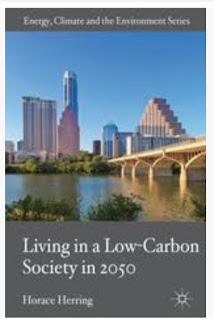The book is a well-structured work, educational and accessible. It has a coherent, well-thought out style that makes sense of very tough material, in particular the chronology of systematic legislation and the oppression of First Nations people since confederation and before. Art Manuel was a fighter for indigenous self-determination for his entire life, as was his father before him, George Manuel, and the book is loaded with helpful guidance towards a future of decolonized prosperity.
With a complete versing in UNDRIP, the United Nations Declaration on the Rights of Indigenous People, and as it is his job to be a critic, he spares no one his razor-sharp wit. At the time of writing he had an extremely cynical view of Justin Trudeau's approach, interpreting it as yet another twist in a pattern of doublespeak that creates false hope.
In particular, the book takes us on an interesting exploration of the White Paper, lest we forget, that is unforgettable but also grim and sobering. “Canada's unwillingness then and now to change comprehensive land claims and self-government policies, both of which demand that we surrender our Aboriginal title and rights, indicate that Canada accepts no fundamental change to be made to our impoverishment. Administering to Indigenous peoples through the dependency programs is an expenditure to maintain Canada and the provinces' 99.8 per cent control of our Aboriginal and treaty territories.”
He talks about new negotiations that offered non-committal agreements for FN land claims, but introduced a prerequisite of first extinguishing any existing arrangements and rights. In other words, contemptuous wordplay to further draw FN leaders towards legal quicksand. Remarks Manual, “but by this time, the UN was watching. After 1975, the UN said to Canada, 'You cannot ask indigenous people to extinguish their title as part of a land settlement agreement.' No people in world has the right to demand another people surrender their land to them. So Canada had to figure out how to meet the UN requirement and still get control of our land.”
My favourite chapter was chapter ten, “Changing Legal and Policy Landscape – 1984-2014” which is written with Art Manuel's typical dry wit. “We can see from the table below that the shape of these agreements are not really negotiated (in the usual sense of two parties sitting down and going through give and take) at all. The chapter then actually supplies a “Cookie cutter agreement” chart which, although wittily named, is undeniably accurate and damning in its presentation. He explains the Nisgaa court challenges, remarking, “the bureaucrats seemed have provided an endless stream of euphemisms and Orwellian distortions for what they are actually doing. One of the more recent was the “modified rights” model. According to this model, Indigenous people would be forced to “modify” their rights so they no longer included what we understood as Aboriginal title. They don't extinguish our title out of existence, instead they modify it out of existence.”
Explains Manuel, “it can all get very confusing, especially when you're trying to explain this to grassroots people, who use language with integrity.” Addressing the non-existent change in what are touted to the public as new policies, Manuel comments, “in a staggering case of déjà vu , the 2012 policy followed the broad lines of the White Paper policy of 1969. And the new Trudeau government simply adopted the 2012 Harper policy, which in fact was based on Liberal strategies going back to 1973 when the Supreme court initially kicked the can of Indigenous rights in the direction of the government.”
In Chapter eleven, Tsilhqot'in Case and Crown Title, Manuel describes how “the Tsilhqot'in decision was delivered on June 26, 2014, and it picked up where Delgamuukw left off with the first ever declaration of Aboriginal title on the ground in Canadian history. By granting this powerful remedy and recognizing the existence of Aboriginal title over a two thousand square kilometre section of Tsilhqot'in territory, the court has shown that extinguishment is far from the only option in Canada.”
Yes, extinguishment is the opposite of thriving and for the land to thrive is the answer, but the shell game of half-truths and deception that has dominated Canada's approach to First Nations rights has got to end. Read this book, it's an inspirational, direct guidebook and Manuel will reset your thinking in a way that is refreshing and empowering at once. Then, after you have read it, take the appropriate action in your own life to apply his visionary teachings to the work that needs to be done.
Manuel, A., Derrickson, R. M., & Klein, N. (2018). The Reconciliation Manifesto: Recovering the land, rebuilding the economy. James Lorimer.



